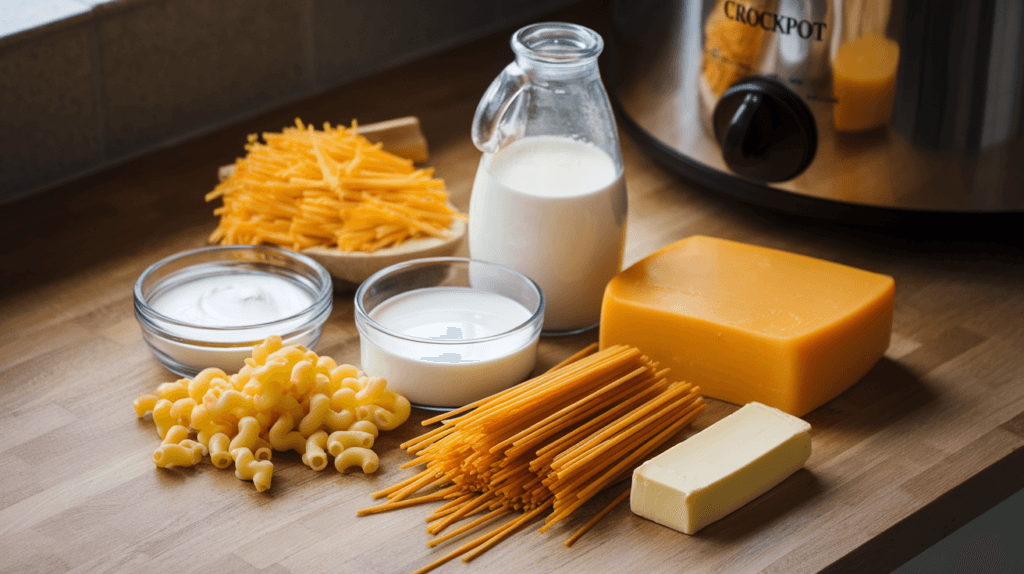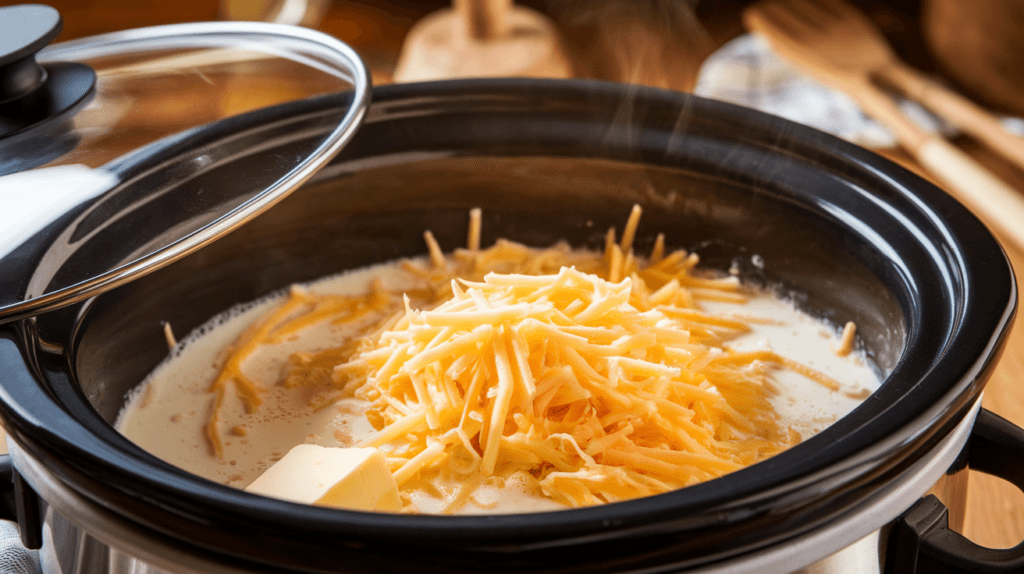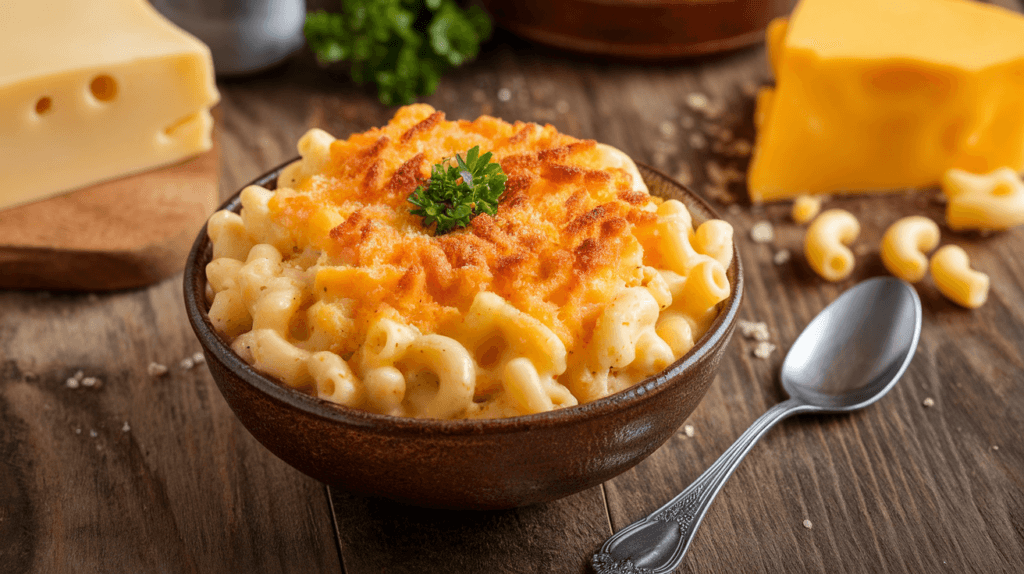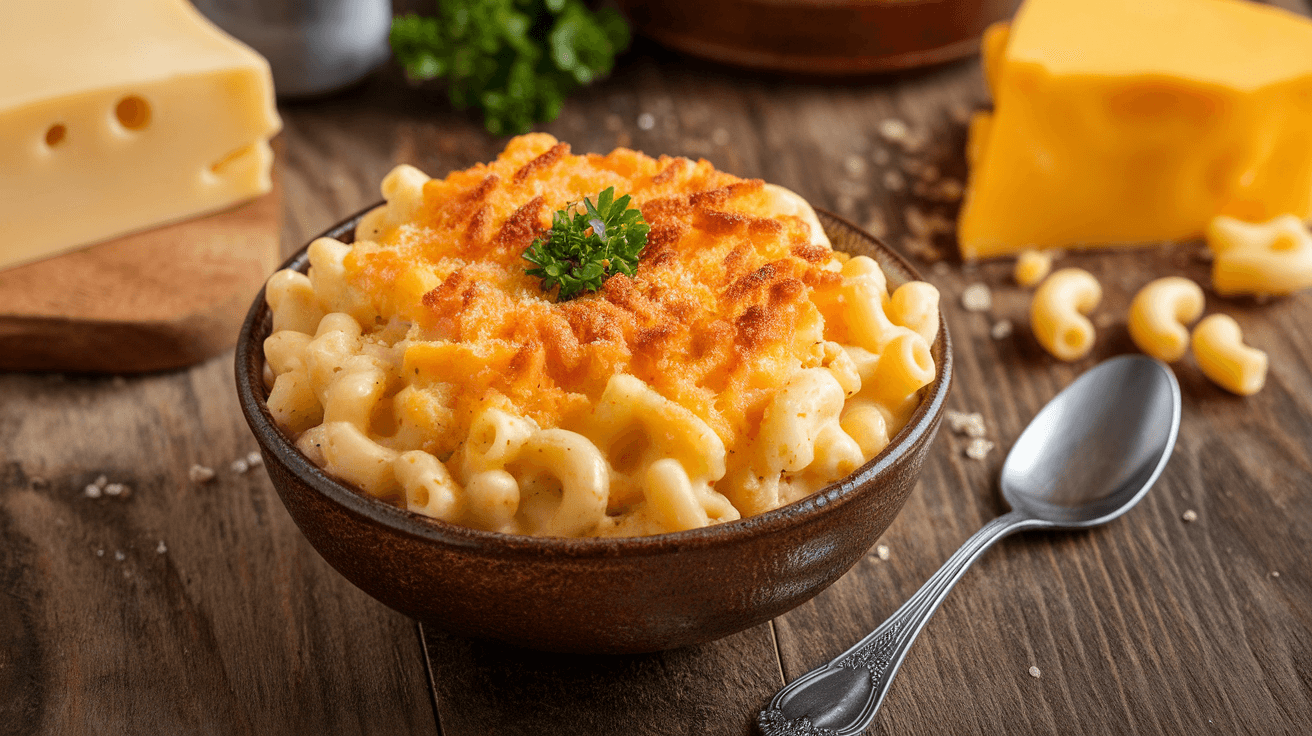Introduction
Mac and cheese is the ultimate comfort food, beloved for its creamy, luscious texture and rich cheesy flavor. When prepared correctly, it can be a show-stopping dish that satisfies even the pickiest eaters. However, if you’ve ever tried making mac and cheese in a crockpot and ended up with a grainy or curdled mess, you’re not alone.
The allure of crockpot cooking is its convenience. You toss in the ingredients, set the timer, and walk away. Yet, for a dish as delicate as mac and cheese, this hands-off approach can sometimes lead to unexpected results—like a grainy texture that ruins the dish’s creamy appeal.
Why does this happen? What causes your carefully selected cheeses to turn into an unappetizing, gritty sauce instead of a smooth, velvety delight? In this article, we’ll dive deep into the science behind cheese, explore common mistakes, and provide actionable tips to ensure your crockpot mac and cheese is always perfectly creamy.
When you’re done reading, you’ll not only understand the reasons for grainy mac and cheese but also have all the tools you need to troubleshoot and prevent this frustrating issue. Let’s get started!
Why Is My Crockpot Mac and Cheese Grainy? Understanding the Problem

Why Is My Crockpot Mac and Cheese Grainy? Understanding the Texture Problem
When mac and cheese turns out grainy, it means the sauce has developed a rough, uneven texture rather than a smooth and creamy consistency. This often happens when the cheese doesn’t melt properly, leading to clumps of protein or fat separating from the liquid base. The result is a dish that feels gritty or granular when eaten.
Graininess can be particularly frustrating because it detracts from the rich, silky texture that makes mac and cheese so satisfying. To fix the issue, it’s important to understand the root causes behind it.
Common Causes of Graininess in Crockpot Mac and Cheese
- Improper Cheese Melting: Certain cheeses don’t melt smoothly and may break apart under heat, causing a grainy texture.
- High Heat: Excessive heat can cause the proteins in the cheese to coagulate, leading to separation from the fats and liquids.
- Pre-shredded Cheese: Anti-caking agents in pre-shredded cheese can interfere with melting, creating a gritty texture.
- Overcooking: Cooking the mac and cheese for too long in a crockpot can cause the sauce to break down.
- Incorrect Dairy Choice: Using the wrong type of milk, cream, or other dairy products can affect the consistency of the sauce.
Each of these factors contributes to grainy mac and cheese in unique ways. The good news is that with some adjustments, you can easily prevent these issues and achieve a creamy, velvety result every time.
Understanding the Problem
What Does “Grainy” Mean in Mac and Cheese?
When mac and cheese turns out grainy, it means the sauce has developed a rough, uneven texture rather than a smooth and creamy consistency. This often happens when the cheese doesn’t melt properly, leading to clumps of protein or fat separating from the liquid base. The result is a dish that feels gritty or granular when eaten.
Graininess can be particularly frustrating because it detracts from the rich, silky texture that makes mac and cheese so satisfying. To fix the issue, it’s important to understand the root causes behind it.
Common Causes: Why Is My Crockpot Mac and Cheese Grainy?
- Improper Cheese Melting: Certain cheeses don’t melt smoothly and may break apart under heat, causing a grainy texture.
- High Heat: Excessive heat can cause the proteins in the cheese to coagulate, leading to separation from the fats and liquids.
- Pre-shredded Cheese: Anti-caking agents in pre-shredded cheese can interfere with melting, creating a gritty texture.
- Overcooking: Cooking the mac and cheese for too long in a crockpot can cause the sauce to break down.
- Incorrect Dairy Choice: Using the wrong type of milk, cream, or other dairy products can affect the consistency of the sauce.
Each of these factors contributes to grainy mac and cheese in unique ways. The good news is that with some adjustments, you can easily prevent these issues and achieve a creamy, velvety result every time.
The Role of Cheese
Types of Cheese and Their Melting Properties
Not all cheeses are created equal when it comes to melting. Some cheeses melt beautifully into a smooth, creamy texture, while others can separate or clump under heat. Understanding the melting properties of different cheeses is crucial to avoiding grainy mac and cheese.
Great Melting Cheeses: Cheddar, Gouda, Gruyère, and Monterey Jack are excellent choices for mac and cheese. These cheeses have high moisture content and melt evenly, creating a luscious sauce.
Poor Melting Cheeses: Feta, goat cheese, and some aged cheeses like Parmesan or Pecorino Romano are less ideal for melting on their own. They lack the moisture or fat needed for smooth integration into sauces.
Using a combination of cheeses can be an effective strategy. For instance, blending sharp Cheddar with a mild, creamy cheese like Mozzarella can enhance flavor while maintaining a silky texture.
Why Pre-shredded Cheese May Be the Reason for Grainy Crockpot Mac and Cheese
Pre-shredded cheese may seem like a convenient option, but it’s often the culprit behind grainy mac and cheese. Most pre-shredded cheese is coated with anti-caking agents like cellulose or starch to prevent clumping. While these additives are harmless, they can interfere with the cheese’s ability to melt smoothly.
Additionally, pre-shredded cheese often lacks the fresh flavor and moisture of a block of cheese. The result is a sauce that struggles to achieve the creamy consistency you’re aiming for.
For the best results, always grate your own cheese from a fresh block. This simple step can significantly improve the texture and taste of your crockpot mac and cheese.
The Science of Heat
How High Heat Contributes to Grainy Crockpot Mac and Cheese
Heat is a critical factor in melting cheese, but too much of it can cause problems. Cheese is made up of proteins, fats, and water, which are held together in a delicate balance. When cheese is exposed to high heat, the proteins can tighten and squeeze out the fat and water, resulting in a separated, grainy texture.
In crockpot mac and cheese, the risk of overheating is significant due to the prolonged cooking time and potential for uneven heat distribution. To avoid this, it’s essential to understand the role of temperature in cooking cheese.
Optimal Temperature for Melting Cheese: Most cheeses melt best between 90°F and 150°F. Cooking beyond this range can cause the cheese to break apart, creating a gritty sauce.
Why Crockpots Pose Unique Challenges
Crockpots are designed to cook food slowly over several hours, which works well for many dishes. However, they can pose challenges for delicate ingredients like cheese. The slow and steady heat of a crockpot can lead to overcooking, especially if the cheese is added too early in the process.
Another issue with crockpots is uneven heating. While the sides of the pot may get hotter than the center, this temperature inconsistency can cause the cheese to melt unevenly, contributing to graininess.
Tips to Manage Heat in a Crockpot:
- Always cook mac and cheese on the “low” setting to prevent overheating.
- Add the cheese toward the end of the cooking process to minimize exposure to heat.
- Stir regularly to ensure even heat distribution and prevent clumping.
By carefully managing the heat, you can keep your cheese from separating and achieve the creamy consistency that makes mac and cheese irresistible.
The Role of Dairy
Choosing the Right Milk or Cream
The type of dairy you use in your crockpot mac and cheese plays a significant role in determining its texture. Dairy serves as the base of the sauce, providing moisture, fat, and creaminess. Selecting the wrong type of milk or cream can lead to a sauce that’s too thin, too thick, or prone to separating.
Common Dairy Choices for Mac and Cheese:
- Whole Milk: A balanced option that provides enough fat for a creamy sauce without being overly rich.
- Heavy Cream: Ideal for an ultra-luxurious texture but may be too heavy for some preferences.
- Evaporated Milk: A popular choice for crockpot recipes as it adds creaminess without the risk of curdling.
- Low-Fat or Skim Milk: These options lack the fat needed for a rich sauce, often resulting in a grainy texture.
For the best results, use a combination of whole milk and heavy cream, or substitute evaporated milk for a foolproof alternative that resists curdling.
Stabilizing the Sauce with a Roux or Cornstarch
One of the most effective ways to prevent graininess is to stabilize your sauce with a thickening agent like a roux or cornstarch. These ingredients help bind the fats, proteins, and liquids together, ensuring a smooth and consistent texture.
How to Make a Roux:
- Melt butter in a saucepan over medium heat.
- Add an equal amount of flour and whisk constantly to form a paste.
- Cook the roux for 1-2 minutes to eliminate the raw flour taste, then slowly whisk in milk or cream.
For crockpot mac and cheese, you can prepare the roux on the stovetop before adding it to the crockpot. This step provides a stable base for the cheese sauce, reducing the risk of separation or graininess.
Using Cornstarch: If you prefer a simpler option, dissolve cornstarch in a small amount of cold milk or water to form a slurry. Add the slurry to the crockpot, stirring well to thicken the sauce.
Both methods work effectively to maintain the creamy consistency of your mac and cheese, even after hours of slow cooking.
Techniques to Avoid Graininess
Preparing Cheese for Crockpot Cooking
One of the simplest yet most effective ways to avoid grainy mac and cheese is to prepare your cheese properly. Poorly prepared cheese can clump, separate, or fail to melt evenly, leading to a grainy texture.
Steps to Prepare Cheese for Crockpot Cooking:
- Grate Fresh Cheese: Always use a block of fresh cheese and grate it yourself. Freshly grated cheese melts more smoothly than pre-shredded options.
- Bring Cheese to Room Temperature: Allowing cheese to come to room temperature before adding it to the crockpot helps it melt evenly.
- Use a Variety of Cheeses: Combining cheeses with different melting properties (e.g., Cheddar and Monterey Jack) can create a smoother sauce.
Cooking on Low Heat and Gradual Melting

Heat management is crucial when using a crockpot for mac and cheese. High heat can cause the cheese to break, leading to a grainy sauce.
Tips for Low and Slow Cooking:
- Set your crockpot to the “low” setting to maintain a gentle heat.
- Gradually add cheese in small batches, allowing each portion to melt fully before adding more.
- Stir frequently to distribute heat evenly and prevent clumping.
These steps ensure that the cheese integrates smoothly with the sauce, avoiding the gritty texture caused by rapid or uneven melting.
Timing When to Add Cheese to the Crockpot
Adding cheese at the right time is critical for achieving a creamy consistency. If the cheese is added too early in the cooking process, it may overheat, causing the proteins to separate from the fats.
When to Add Cheese: Wait until the last 30 minutes of cooking to add the cheese. By this point, the other ingredients will be warm and well combined, providing an ideal base for the cheese to melt into.
During these final 30 minutes, keep the crockpot on low heat and stir frequently to ensure the cheese melts evenly into the sauce. This timing helps preserve the cheese’s texture and flavor, resulting in a smooth and velvety mac and cheese.
FAQs
Can I Use Pre-shredded Cheese in Crockpot Mac and Cheese?
While pre-shredded cheese is convenient, it’s not the best choice for crockpot mac and cheese. Pre-shredded cheese is coated with anti-caking agents like cellulose, which can prevent it from melting smoothly. For the creamiest results, always grate your cheese fresh from a block.
Why Does My Mac and Cheese Separate?
Separation happens when the cheese is overheated or cooked for too long. High heat can cause the proteins in the cheese to coagulate and squeeze out the fat, resulting in a sauce that is oily and grainy. To prevent this, cook on low heat and add the cheese toward the end of the process.
Should I Use Evaporated Milk or Regular Milk?
Evaporated milk is a popular choice for crockpot mac and cheese because it resists curdling and adds a creamy consistency. Regular milk can work too, but whole milk is best to ensure enough fat for a smooth sauce.
What Are the Best Cheeses for Mac and Cheese?
The best cheeses for mac and cheese are those that melt smoothly, such as Cheddar, Gouda, Gruyère, and Monterey Jack. Combining cheeses with different flavors and melting properties often produces the best results.
Can Grainy Mac and Cheese Still Taste Good?
While grainy mac and cheese may still taste good, its texture can detract from the overall experience. Fixing the sauce with a stabilizer like a roux or cornstarch slurry can help salvage the dish.
Is There a Way to Make Mac and Cheese Creamy Without a Roux?
Yes! You can achieve creaminess by using evaporated milk, heavy cream, or adding a small amount of cream cheese. These alternatives help bind the sauce without requiring a roux.
Conclusion

Grainy mac and cheese can be a frustrating experience, especially when using a crockpot. However, with the right techniques and ingredients, you can achieve a creamy, luscious result every time. Pay attention to the type of cheese you use, avoid pre-shredded cheese, and manage your crockpot’s heat carefully. Adding the cheese at the right time and incorporating stabilizers like a roux or cornstarch can make all the difference.
By following these tips and troubleshooting methods, you’ll turn your crockpot mac and cheese into a show-stopping dish that everyone will love. Say goodbye to graininess and hello to creamy perfection!

